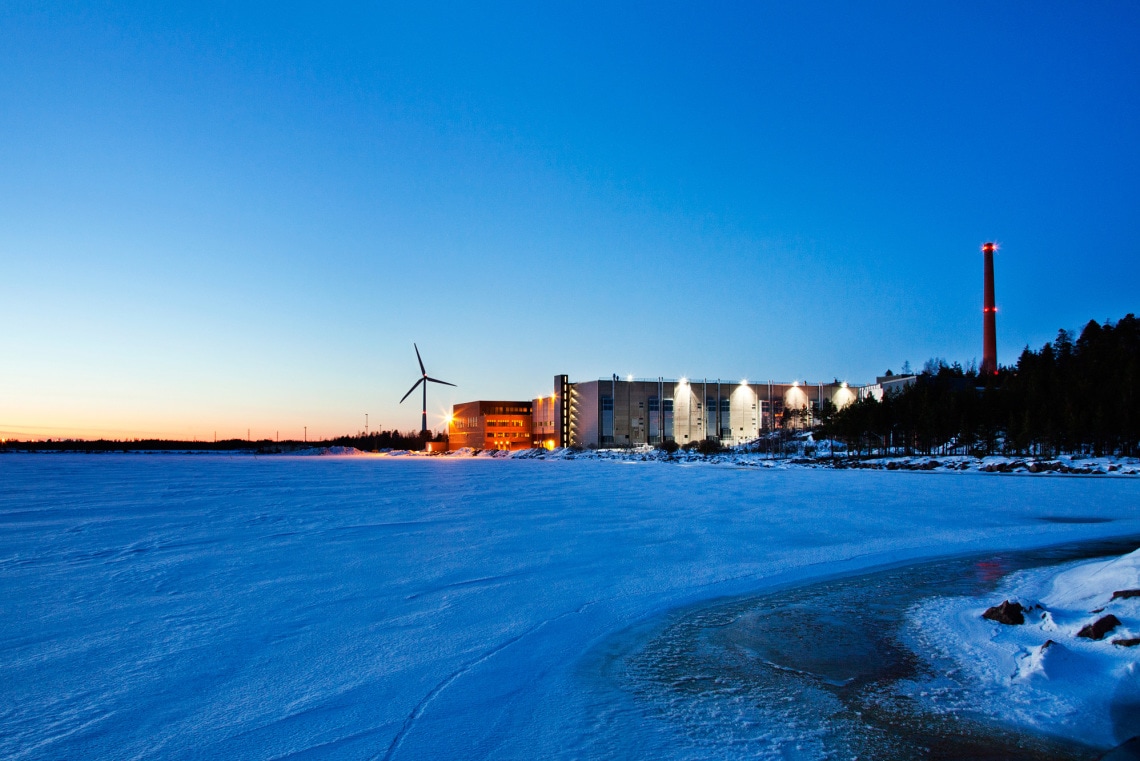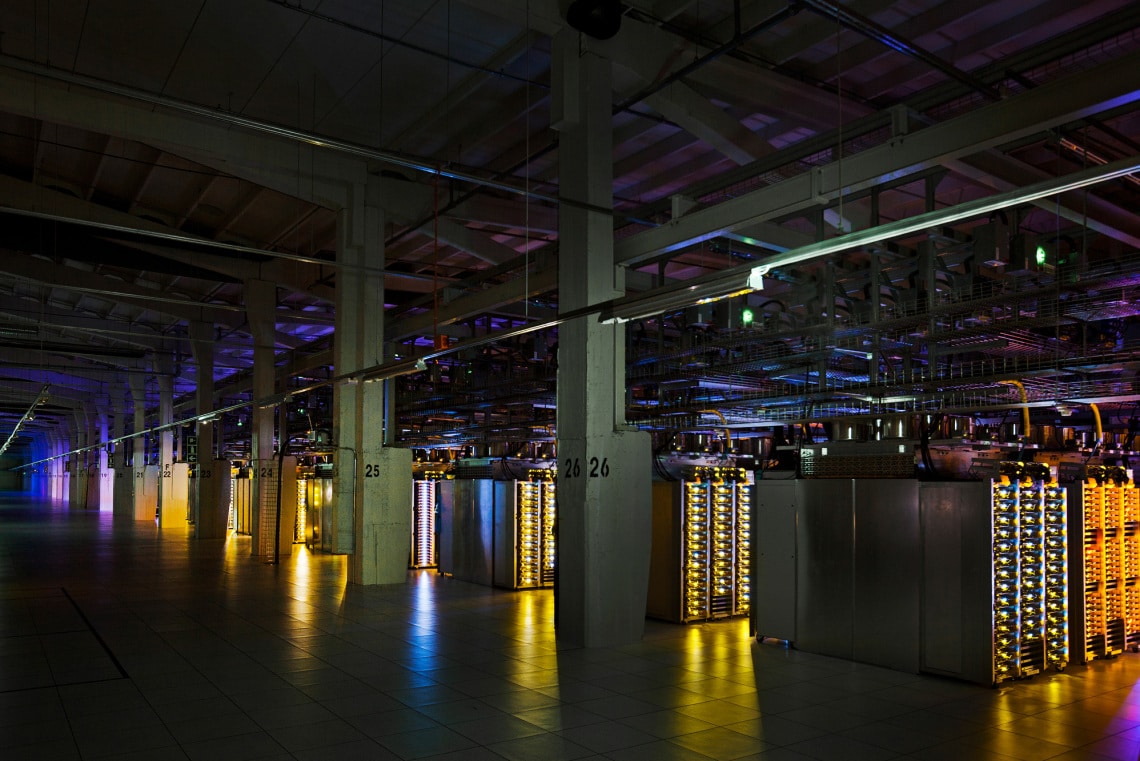Data centre cooling with Wilo pumps – reliable and ecological
Today, it is impossible to imagine a world without computers and the Internet. Google processes 64,000 requests per second. In order to handle this high quantity, the company operates data centres around the world with gigantic servers that require cooling around the clock. At 9,000 m², one of the largest and most recently built data centres is situated in the Finnish town of Hamina. Here, Wilo pumps ensure that the server “keeps a cool head”, and operates reliably, efficiently and ecologically. “Google retains its leading position in building a green Internet” [1]. This title was given to the Internet giant by no less than Greenpeace. The cooling system for one of the latest data centres, built by Google in the Finnish town of Hamina, befits this “green theory of colours”: High-performance pumps by Wilo have been installed for cooling the numerous connected servers in the large complex to their operating temperatures. This is not because they are green in colour, but because they are actually green – from their energy efficiency to their reliability and to their long service life.
The Number One for environmental protection
Google has deliberately chartered an eco-friendly course for the design and construction of the data centre in Finland. According to the ‘Clicking Clean’ report, a study by Greenpeace on the life-cycle assessment of the 300 largest data centres worldwide, Google is an industry leader in matters of environmental protection. The company’s long-term goal is to deliberately only use renewable energies to meet the energy requirement for its data centres. At the same time, energy efficiency in its data centres is also to be increased, especially for the energy-intensive cooling of its servers.
The solution — cooling water driven by Wilo pumps
Modern server systems are allowed to operate at temperatures of up to around 35 °C. Without cooling, however, this limit would be exceeded very quickly, bringing everything to a standstill. Today 22 percent of energy consumption in data centres is attributed to cooling. In 2011, the electricity requirement for data centres worldwide stood at 684 billion kWh. In addition to the choice of location — Hamina has an average temperature of 2° Celsius and lies near the Finnish sea — it is the modern ‘CronoLine-IL’ Wilo pumps in particular which have a positive effect on the energy required for cooling. The ‘CronoLine-IL’ Wilo pumps are installed horizontally as in-line pumps in the piping systems to be able to supply the required amount of cooling water. The pipe sizes of the cooling circuits range from DN 150 to DN 200. The impellers of the pumps have been designed to conform with this: they have a nominal diameter of 320 or 270 mm. The specific impeller geometry and a flow-optimised coating play a part in the high overall efficiency. The hydraulic efficiency of the “Wilo-CronoLine-IL” with connection nominal diameter DN 150 is over 80 percent, and the hydraulic efficiency of that with DN 200 more than 70 percent. The motor efficiency is at 94 percent. As a result, the nominal capacities of the motors, between 30 and 37 kW, are sufficient to pump the volumes required for meeting the cooling loads. Additional energy savings are made possible by the consumption-based pump speed control via frequency converters.
Reliable and economical operation
The Internet never sleeps. Google answers around 64,000 search queries per second; this number alone shows the high demands that the company has to place on the availability of its data centres. Further, important cloud services for other companies with locations worldwide also require data to be available around the clock. Therefore, besides computing technology, cooling is also a crucial factor for operational reliability. Wilo produces its pump housing and individual components from highly durable materials in order for the pumps to convey cooling water reliably, thus keeping the temperature as constant as possible. The housing and impeller of the ‘CronoLine-IL’ series, for example, are made of wear-resistant cast iron with flake or spheroidal graphite. To further reduce the pumps’ life cycle costs, the pump lantern is made using a patented design. The design ensures specific removal of the relatively large amounts of condensate formed on the pump housing when a pump is conveying a cold medium at high ambient temperatures. This protects the pumps against typical corrosion damage. In addition, highly wear-resistant mechanical seals made of graphite, silicon carbide, EPDM and stainless steel allow for long maintenance intervals.
[1] Report „Clicking Clean“, April 2014, Greenpeace
[2] Prognose „VNI Complete Forecast Highlights“, Stand Juli 2016, CISCO


